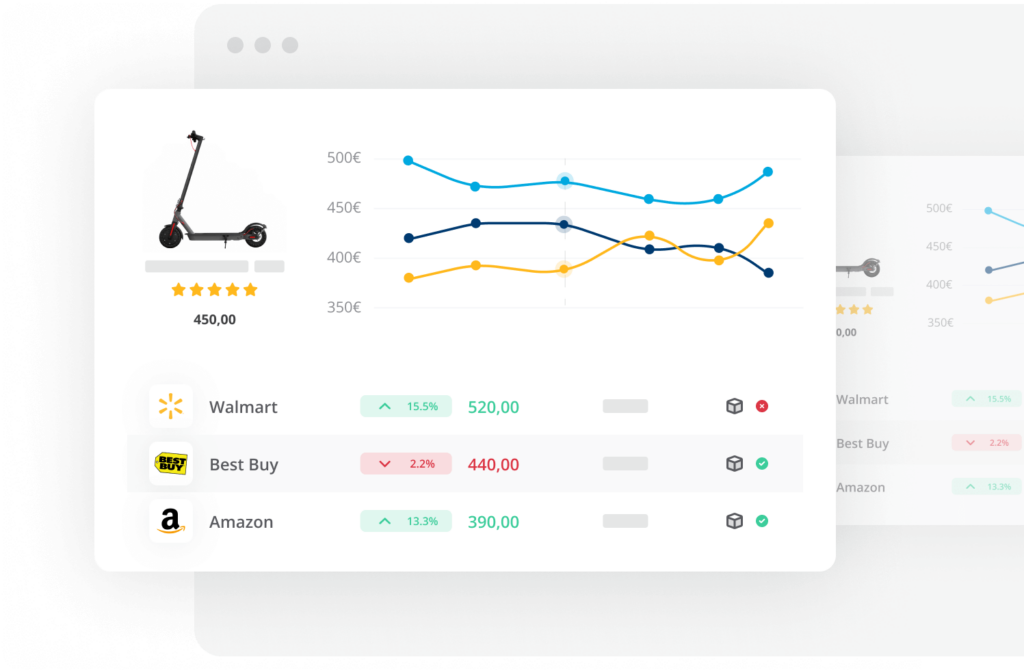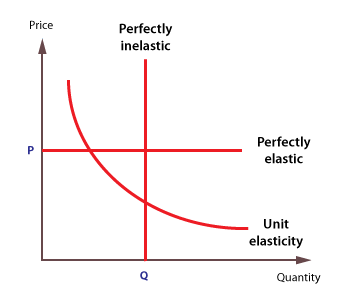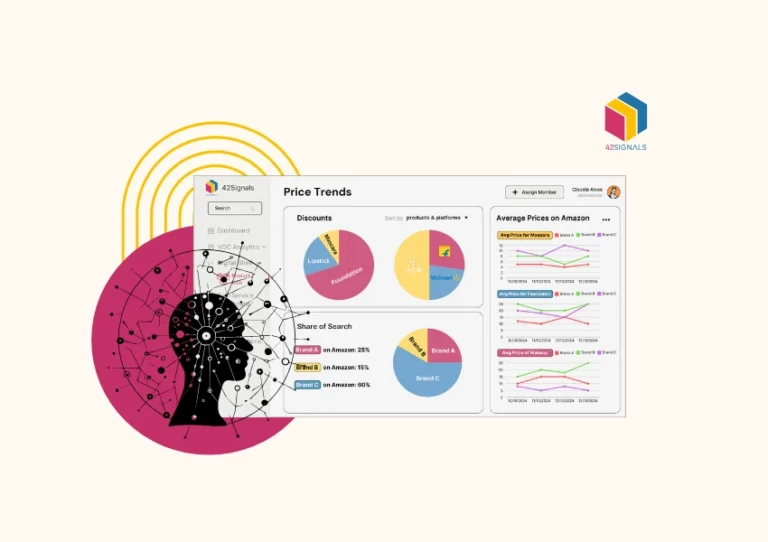One of the most effective strategies to gain a competitive edge today is through pricing intelligence. By leveraging advanced pricing intelligence tools, companies can identify market trends, optimize pricing strategies, and ultimately drive profitability.
These tools allow businesses to navigate the complexities of pricing with greater precision, offering insights that are often overlooked in manual or traditional pricing models. Let’s explore how these tools work, the benefits they offer, and how they can be a game-changer for businesses in today’s dynamic and fast-paced marketplace.
Understanding Pricing Intelligence Tools

Image Source: Minderest
Pricing intelligence tools are sophisticated software solutions designed to collect, analyze, and interpret vast amounts of pricing data from various sources. These tools utilize advanced algorithms and machine learning techniques to provide actionable insights into market trends, competitor pricing, and consumer behavior.
The technology behind these tools has evolved rapidly in recent years, giving businesses the ability to leverage big data to refine their pricing strategies in ways that were previously impossible.
The core components include:
- Data Collection: These tools gather data from multiple sources, such as e-commerce websites, competitor listings, and market reports. This data collection is done in real-time, ensuring that businesses have access to the most current information. Real-time data is critical in industries where pricing can fluctuate rapidly, such as retail, hospitality, and e-commerce. In such industries, a delay in recognizing a competitor’s price change can result in lost sales or diminished profit margins.
- Data Analysis: Once the data is collected, the tools analyze it to identify patterns, trends, and anomalies. This analysis helps businesses understand how prices fluctuate over time and across different markets. With this information, companies can make data-driven decisions to adjust their pricing strategies. For example, if a competitor suddenly lowers its prices on a key product, the pricing intelligence tool will detect this and alert the business, allowing it to respond promptly and maintain a competitive edge.
- Visualization: The tools often present the analyzed data in easy-to-understand visual formats, such as graphs, charts, and dashboards. This visualization aids in quickly identifying trends and making informed decisions. Managers and decision-makers can interpret data at a glance, speeding up the process of adapting pricing strategies to market conditions. The ability to visualize complex data simplifies decision-making, especially when different teams—like marketing, sales, and finance—need to collaborate.
- Recommendation Engines: Many tools come with recommendation engines that suggest optimal pricing strategies based on the analyzed data. These recommendations can be tailored to specific business goals, such as maximizing profit margins or increasing market share. The recommendation engines help businesses stay agile, enabling them to implement pricing strategies that respond to real-time market dynamics while considering historical trends.
Identifying Market Trends with Pricing Intelligence

One of the most significant advantages of pricing intelligence tools is their ability to identify market trends.
These trends can be subtle and often difficult to detect without the use of automated systems that scan vast amounts of data.
Here’s how businesses can leverage these tools to stay ahead:
- Monitoring Competitor Prices: By continuously tracking competitor pricing, businesses can identify trends in pricing strategies, such as discount periods, promotional offers, and price changes. This information is crucial for developing competitive pricing strategies. For instance, if a business sees that a competitor is regularly offering discounts during specific times of the year, it can plan similar promotions to remain competitive.
- Understanding Consumer Behavior: Pricing intelligence tools can analyze consumer behavior patterns, such as purchase frequency, preferred price ranges, and response to promotions. This understanding helps businesses tailor their pricing strategies to meet consumer expectations and drive sales. Analyzing consumer behavior also allows businesses to anticipate demand for certain products and adjust prices accordingly. For example, if customers are particularly price-sensitive during certain times, offering promotions or limited-time discounts may enhance sales.
- Detecting Seasonal Trends: Seasonal trends significantly impact pricing strategies. These pricing intelligence tools can identify patterns related to holidays, events, and seasonal demand fluctuations, allowing businesses to adjust their prices accordingly. Retailers, for example, can prepare for Black Friday or back-to-school shopping periods by adjusting their pricing models well in advance, ensuring they can maximize sales during peak shopping seasons.
- Identifying Price Elasticity: These tools help businesses understand price elasticity, which is the measure of how sensitive consumers are to price changes. By analyzing historical data, companies can determine the optimal price points that maximize revenue without alienating customers. Understanding elasticity helps prevent pricing strategies that may inadvertently reduce sales volume, while still striving for profit maximization.

Image Source: Hubspot
Benefits of Leveraging Pricing Intelligence Tools
The use of pricing intelligence tools offers numerous benefits to businesses, including:
- Increased Profitability: By optimizing pricing strategies based on accurate data, businesses can increase their profit margins. The tool also helps identify the sweet spot between competitive pricing and profitability. Companies can adjust prices dynamically based on demand, competitor prices, and other relevant factors to ensure profitability without sacrificing market share.
- Enhanced Competitiveness: Staying ahead of competitors requires real-time insights into their pricing strategies. These platforms provide businesses with the information needed to remain competitive in the market. Having access to competitor pricing data allows businesses to anticipate competitor moves and react faster than they could without such tools.
- Improved Decision-Making: Data-driven decision-making is crucial in today’s business environment. These tools provide actionable insights that help businesses make informed decisions quickly and confidently. This reduces the risk of guesswork and helps ensure that pricing decisions are based on solid evidence.
- Efficient Pricing Management: Managing prices across multiple channels and markets can be complex. Such pricing intelligence tools streamline this process by providing a centralized platform for pricing management, reducing the risk of errors and inconsistencies. Businesses that sell across various online platforms, for example, can use a pricing intelligence tool to maintain consistent and competitive pricing across all their listings.
- Customer Satisfaction: Understanding consumer behavior and preferences allows businesses to set prices that meet customer expectations. This leads to increased customer satisfaction and loyalty. Offering competitive pricing while ensuring profitability helps build a loyal customer base, as customers appreciate businesses that offer perceived value.
Getting Started
Implementing pricing intelligence tools requires a strategic approach. Here are some steps to consider:
- Identify Business Goals: Determine what you aim to achieve with pricing intelligence, such as increasing market share, improving profit margins, or enhancing customer satisfaction. Understanding the specific needs of your business will help you choose the right tool and set measurable goals.
- Choose the Right Tool: There are numerous tools available, each with its unique features. Select a tool like 42Signals that aligns with your business goals and integrates seamlessly with your existing systems. It’s important to evaluate different options to find the one that best fits your business’s size, industry, and needs.
- Train Your Team: Ensure that your team is adequately trained to use the pricing intelligence tool. This includes understanding how to interpret data and implement recommended pricing strategies. Proper training will maximize the tool’s effectiveness and help the team understand how to react to the insights it provides.
- Continuously Monitor and Adjust: The market is constantly evolving, so it’s essential to continuously monitor pricing trends and adjust your strategies accordingly. Regularly reviewing and updating your pricing strategies ensures that you remain competitive. Pricing strategies tools help you stay flexible enough to adapt to new data and market conditions.
Conclusion
Adopting pricing intelligence tools and strategies is highly beneficial for businesses in the long run. These tools provide an effective way to enhance competitiveness, profitability, and decision-making processes. By integrating pricing intelligence into daily operations, businesses can stay ahead of market trends, respond quickly to competitive moves, and better serve their customers.
If you would like to have a free demo of our tool, 42Signals, sign up for a free trial today.
Frequently Asked Questions
What are price intelligence tools?
Price intelligence tools are software platforms that collect, analyze, and report on pricing data from competitors and the broader market. They help businesses:
- Monitor competitor prices in real-time
- Track price history and trends
- Identify underpriced or overpriced products
- Maintain MAP (Minimum Advertised Price) compliance
- Adjust pricing dynamically based on market data
Examples:
- 42Signals – For digital shelf visibility, price tracking, and assortment benchmarking
What are the 4 pricing strategies?
The four core pricing strategies used by most businesses include:
- 💰 Cost-Plus Pricing – Setting the price by adding a fixed margin to the production cost. Simple, but doesn’t always reflect market demand.
- 🏷️ Competitive Pricing – Basing your price on what competitors are charging. Works well in crowded markets.
- 🎯 Value-Based Pricing – Pricing based on the perceived value to the customer, not just cost. Often used for luxury or niche products.
- 🚀 Penetration Pricing – Offering lower prices initially to enter the market and gain traction. Common in tech and subscription-based models.
What is intelligent pricing?
Intelligent pricing refers to a data-driven, automated approach to setting and adjusting prices in real-time based on:
- Competitor pricing
- Demand trends
- Inventory levels
- Customer behavior and location
- Seasonality and promotions
Often powered by AI and machine learning, intelligent pricing helps companies maximize revenue, optimize profit margins, and stay agile in competitive markets.
Example: A fashion retailer uses intelligent pricing to automatically reduce prices on slow-moving stock while increasing prices on trending items with limited availability.
What are market intelligence tools?
Market intelligence tools help businesses gather and analyze data about their industry, competitors, customers, and trends to make strategic decisions. Common functions include:
- Tracking competitor activity
- Monitoring market share and pricing trends
- Analyzing customer sentiment and behavior
- Identifying gaps and opportunities in the market
- 42Signals – Focuses on competitive pricing and digital shelf analytics
- SEMrush & SimilarWeb – For digital performance benchmarking
- Crunchbase & CB Insights – For tracking competitors, funding rounds, and market trends
- Sprout Social – For sentiment and social listening





